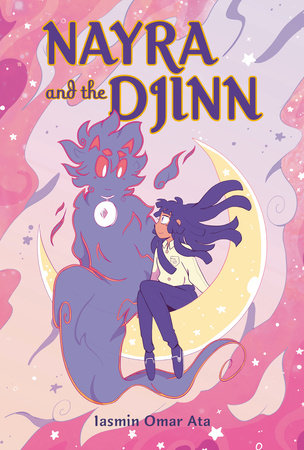Creating Safe Spaces:
Simple Strategies for Helping Every Kid Feel Welcome
by Iasmin Omar Ata
Nothing is going right for Nayra Mansour. There’s the constant pressure from her strict family, ruthless bullying from her classmates, and exhausting friendship demands from Rami — the only other Muslim girl at school. Nayra has had enough. Just when she’s considering transferring schools to escape it all, a mysterious djinn named Marjan appears. As a djinn, a mythical being in Islamic folklore, Marjan uses their powers and wisdom to help Nayra navigate her overwhelming life. But Marjan’s past is fraught with secrets, guilt, and trouble, and if they don’t face what they’ve done, Nayra could pay the price.
In my newest graphic novel, Nayra and the Djinn, most of the central conflicts in the story sprout from seeds of miscommunication or judgment from others who don’t accept the main characters — such as how Nayra’s classmates, for the most part, ostracize her for being Muslim.
But as Nayra points out to her biggest bully in the story: “I do understand. But you assume that I don’t, because I’m different from you — so you shut me down… But it’s amazing what you can do, what you can find, how you can grow, when you just try.”
Listen to each other.
One of the most important takeaways from Nayra and the Djinn is the importance of opening up, communicating, and listening to each other. In our communities, everybody has different needs and different ways of communicating those needs and their feelings. Being mindful of this while interacting in our spaces can help us avoid conflict and stress while helping everybody feel accepted and comfortable.
RELATED: Children’s Books That Celebrate Muslim Culture
Be curious and ask questions.
There are many ways to be mindful, and one of the most important is also the most simple: ask people about themselves and genuinely listen to their responses. When meeting somebody, ask what they want to be called, their pronouns, their accessibility needs, and so on — and respect these things after they’re told to you. Beyond that, allow them to speak about their interests, culture, and needs. (Sometimes it’s more important to listen than to speak over somebody!) Through connecting genuinely, we celebrate each other for our uniqueness and both how we are similar and how we are not.
Of course, it’s not always easy; even when trying to nurture the best space possible, mistakes can happen, and feelings can be hurt — and that’s part of what Nayra and the Djinn is about, too.
Be respectful during tough conversations.
When addressing a disagreement or a difficult conversation within a community, it’s helpful to precede it by pointing out that you are coming from a place of respect — and if it’s with someone you’re close to, a place of love — to establish a solid foundation so the conversation comes from the right place. It can be anxiety-inducing to speak, but it also can be necessary. As long as all parties come from a good place, just about anything can be talked through productively.
These are all simple strategies that I’ve found successful in my life, and part of writing Nayra and the Djinn was exploring these means to communicate. Hopefully, these pointers will be helpful when navigating your own spaces — whether you practice them directly or use them as jumping-off points to find other ways to communicate successfully with others.
Let’s all create a kinder world together.
-

Nayra and the Djinn
Preorder from:

